“The Ford Motor Company had created a color called ‘Daisy Pink’ especially for his aunt. She was famous in her own right and had the paint sent to Fender”: Meet 9 of Fender’s most elusive offset guitars
From Fender Japan exclusives to mid-’60s unicorns, and a 1958 Sparkle Sunburst Jazzmaster that’s a holy grail in anyone’s book…
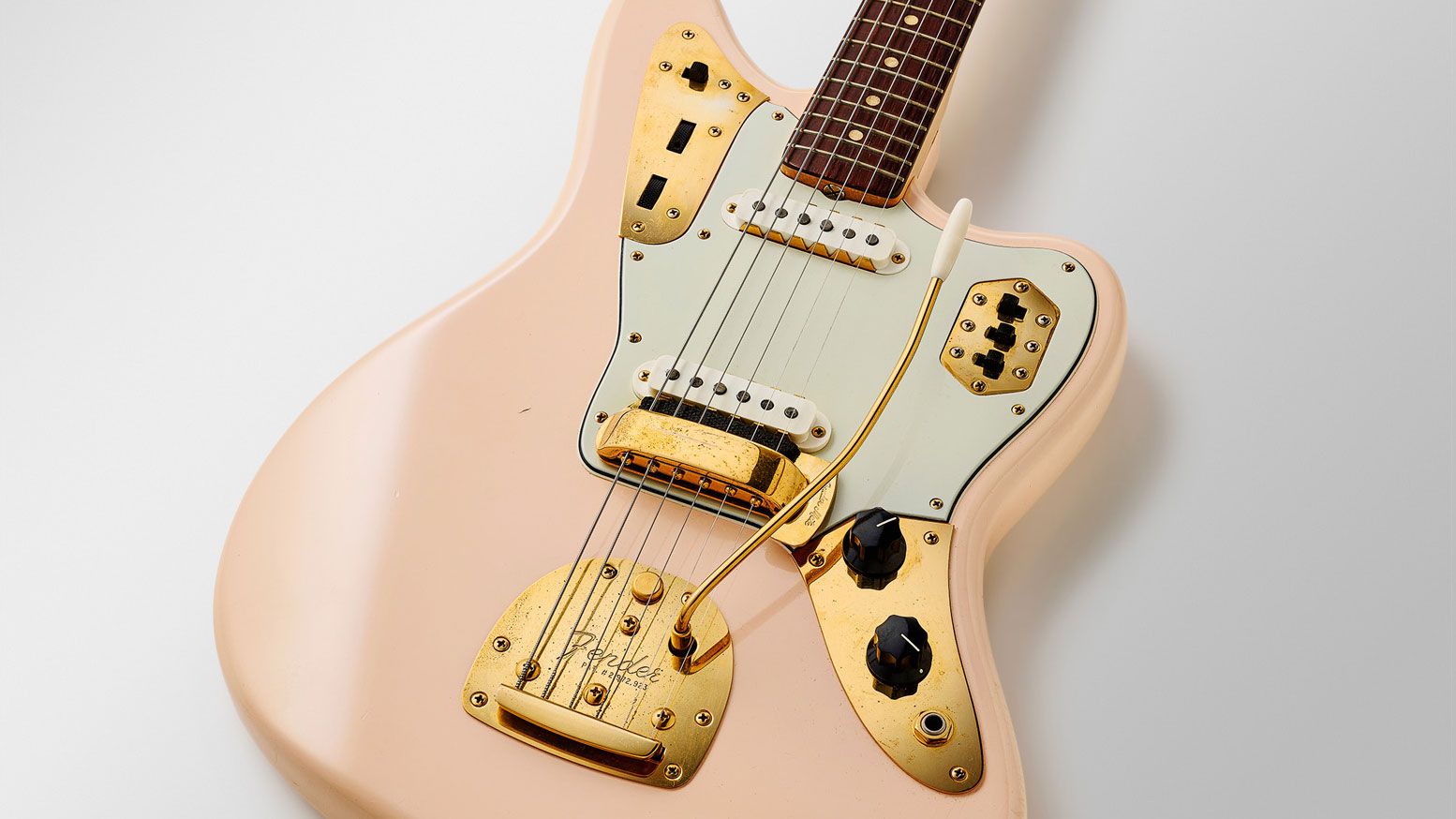
Here is a little something for the electric guitar enthusiast whose impulse to empty the kids’ college fund is triggered by the sight of a vintage offset guitar – and for those of us who look at Fender Japan and wish we got all the same cool models in other territories, too.
Yes, we’re talking offsets, with nine super-rare models to take a closer look at. Three were shown to Guitarist by Japanese offset specialists Gas Station Guitars, who spoke to us for our feature on how the Japanese Fender offset conquered the world.
The other six are bona-fide unicorns, vintage rarities, and proof that the offset has always been cool – it just needed some time to find its audience, as we attested in our history of Fender offset guitars.
Good luck picking a favorite.
1. 1958 Fender Jazzmaster sparkle Surfburst
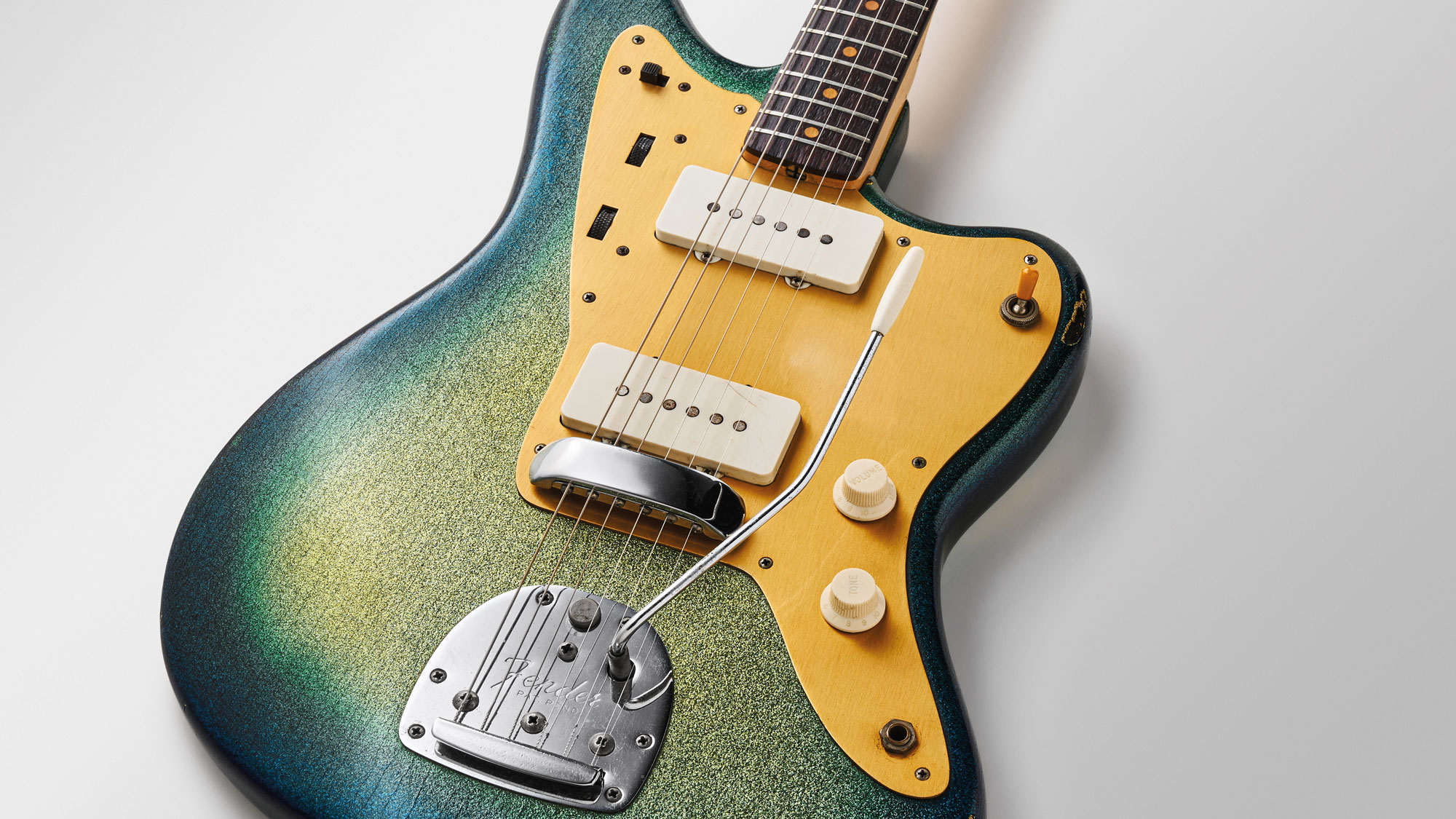
The worlds of cars and guitars were closely intertwined in 1950s America. The custom car culture of California in the era ensured that eye-catching paint jobs were much in demand among hot-rod drivers who wanted to stand out from the pack visually as well as through sheer horsepower.
This movement coincided with dazzling new paints by companies such as Alcoa, and thus sparkle finishes became the most striking of a new breed of paint treatments for customising cars.
Fender wasn’t slow to offer customers similar finishes on its guitars as special orders, either as a refinish for a Fender they already owned or as a custom order. As Fender’s factory didn’t have the facility for spraying the coarse particulates in sparkle paints, orders were subbed out to local auto-finish specialists (such as Dennis Swiden).
Get The Pick Newsletter
All the latest guitar news, interviews, lessons, reviews, deals and more, direct to your inbox!
This stunning 1958 Jazzmaster is one such guitar and its unique livery has been dubbed ‘Sparkle Surfburst’. It was formerly in the collection of vintage guitar expert Norm Harris and it may have been played by Nick O’Malley of the Del-Tones.
2. 1958 Fender Jazzmaster Tobacco Sunburst
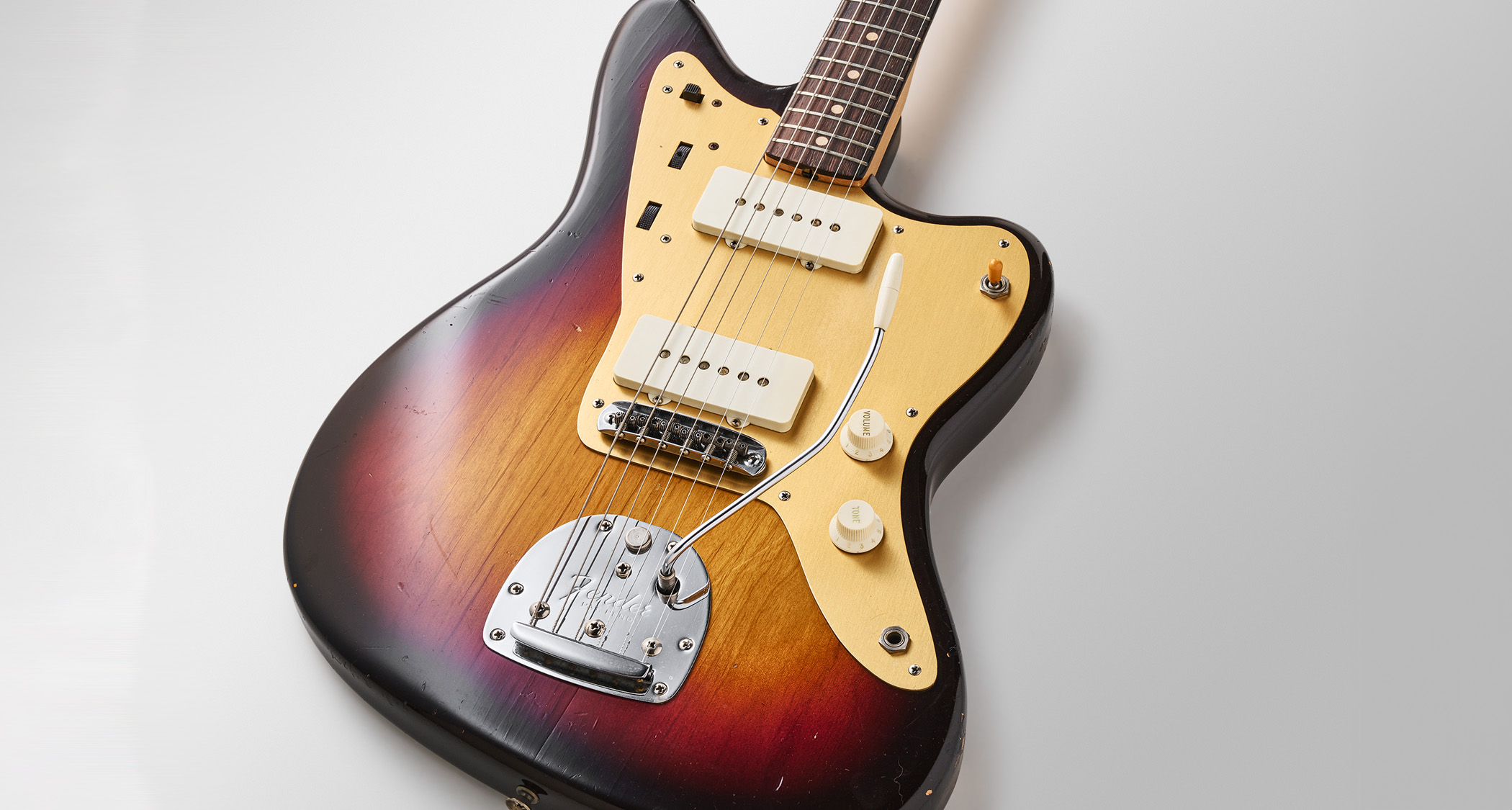
Paul Kelly, who co-authored Fender: The Golden Age 1946-1970 with his brother Martin Kelly, recalls an all-too-familiar motivation for buying his first 50s Jazzmaster. In the late 70s, Paul and Martin had set their hearts on buying an original pre-CBS Fender.
“There was a shop called Holiday Music in Leytonstone and they started importing everything,” Paul recalls. “We couldn’t afford Strats or Teles, but you could get a 50s Fender Jazzmaster for really cheap. I eventually got one there for £180. And that was a lot of money, but it was affordable, you know? They had a sunburst and a gold one, and the gold one was £250, whereas mine was £180.
“Anyway, I managed to buy a sunburst one that was [refinished] white – it was a ’59, but the paint had been scraped off it. As I was walking out of the shop, the guy said, ‘Oh, don’t you want the case?’ And so he went and got out this brown Tolex case. So that was the first one I actually bought.”
This particular all-original ’58 example with its gold, anodised scratchplate is from the Seven Decades collection.
3. 1960 Fender Jazzmaster (Custom Order) Gold
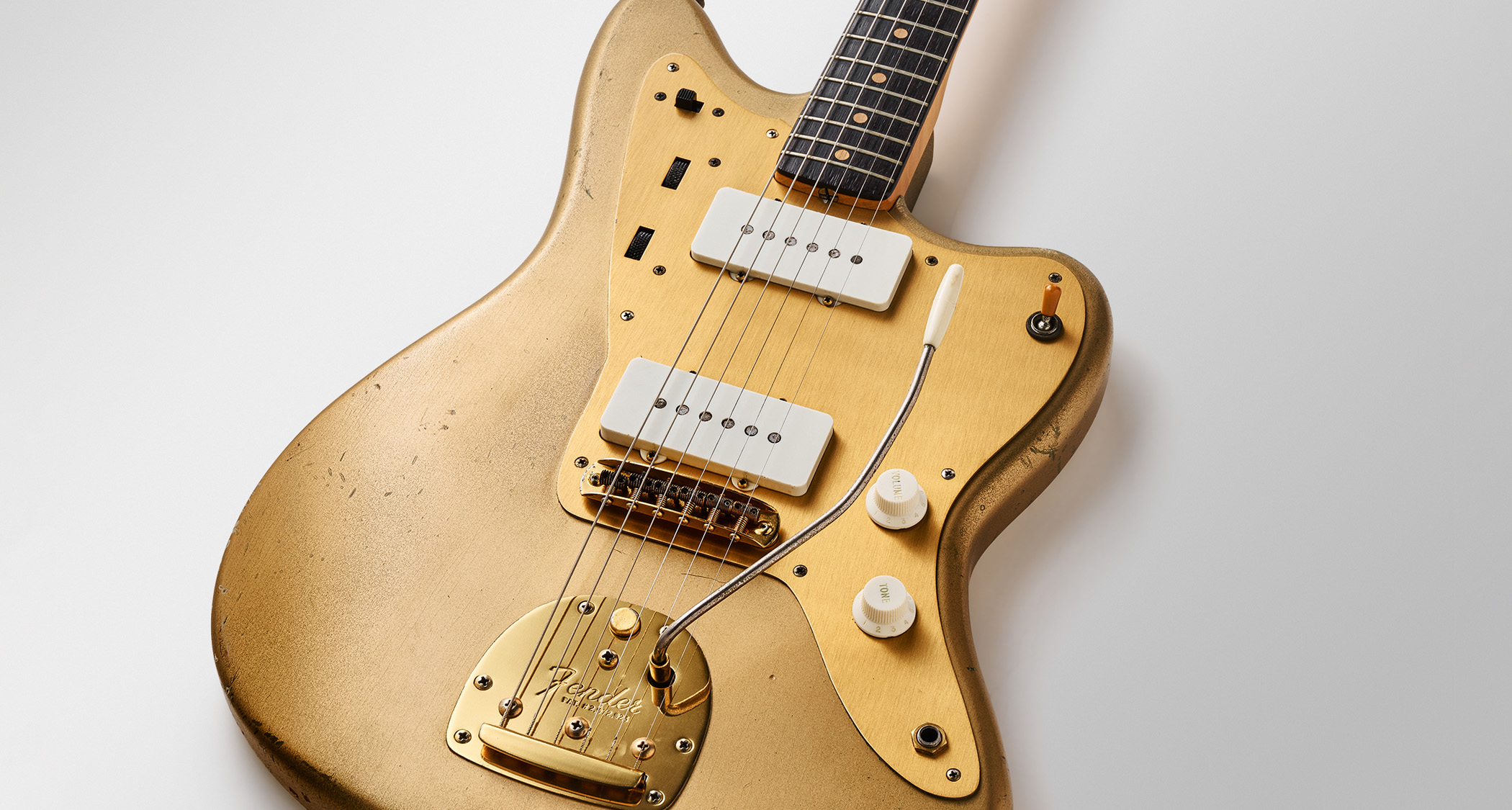
This stunning 1960 Jazzmaster is typical of early custom colour Jazzmasters in that the gold paint used does not belong to one of the later, more familiar classifications from the Fender Custom Color charts, such as Shoreline Gold. Instead, it is likely an unspecified metallic gold by a commercial paint firm, possibly sourced from automobile part suppliers in Fullerton.
This model goes all in on the gold theme with anodised gold scratchplate and hardware to boot. Unlike some later Fender offsets, however, it does not sport a matching headstock.
“The matching headstock thing was applied to offsets, but it was not applied to the other [Fender electrics],” Martin Kelly adds, which explains the later prevalence of matching headstocks on reissue Fender Japan offsets. Custom colour Fenders are traditionally among the most expensive to collect, but Phil Hylander of Seven Decades says the relative affordability of vintage offsets, for many years, made custom colour examples more accessible to buyers.
4. 1963 Fender Jazzmaster Lake Placid Blue
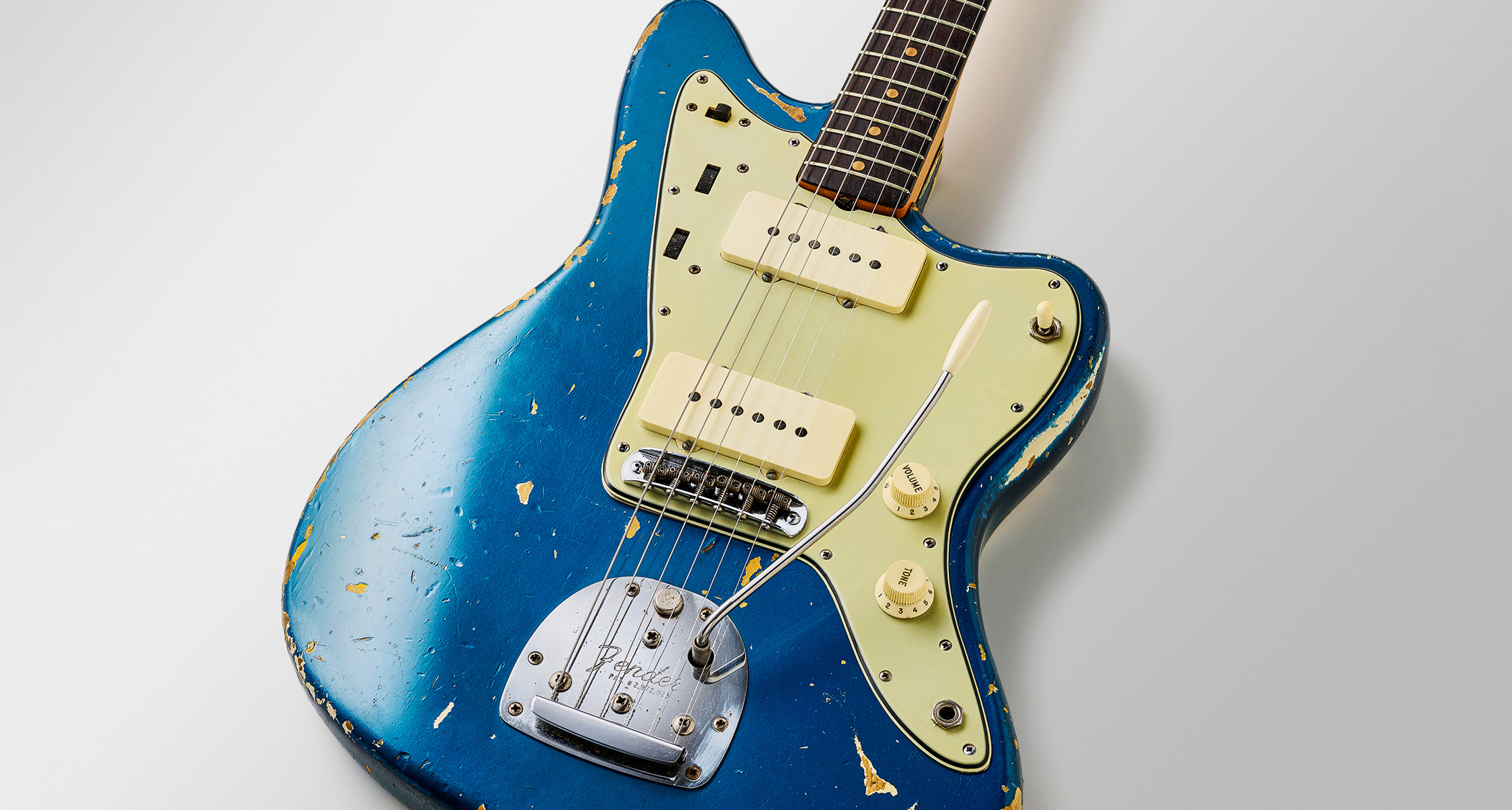
This beautiful Jazzmaster from 1963 belongs to Paul Kelly, who explains how he acquired it: “I was living in London in 1984 and I used to go to Denmark Street every day. One day, this blue Jazzmaster suddenly appeared in Andy’s guitar shop and I thought, ‘Wow, that’s amazing,’ because I don’t think I’d seen a Lake Placid Blue Fender by that point.
“So I’d go every day and just stare at this guitar, but one day it was suddenly gone and I was like, ‘Ah shit!’ But I couldn’t afford it, it was like £400. Just a week or two after, Martin and I were at The Forum watching Orange Juice with Edwyn Collins – with that guitar!
“Fast forward a few years to 1994, I was playing with Saint Etienne and we were recording at Edwyn’s studio, so I asked him, ‘You haven’t still go that blue Jazzmaster have you?’ He said, ‘Yeah,’ and he let me use it on the session. Afterwards, I said, ‘You don’t want to sell it do you?’ But he said, ‘Nah.’ He let me borrow it and I took it on tour round Europe and when I got back he said, ‘Look if you want to buy it, I’ll sell it to you.’”
5. 1964 Fender Jaguar Custom ‘Daisy’ Pink
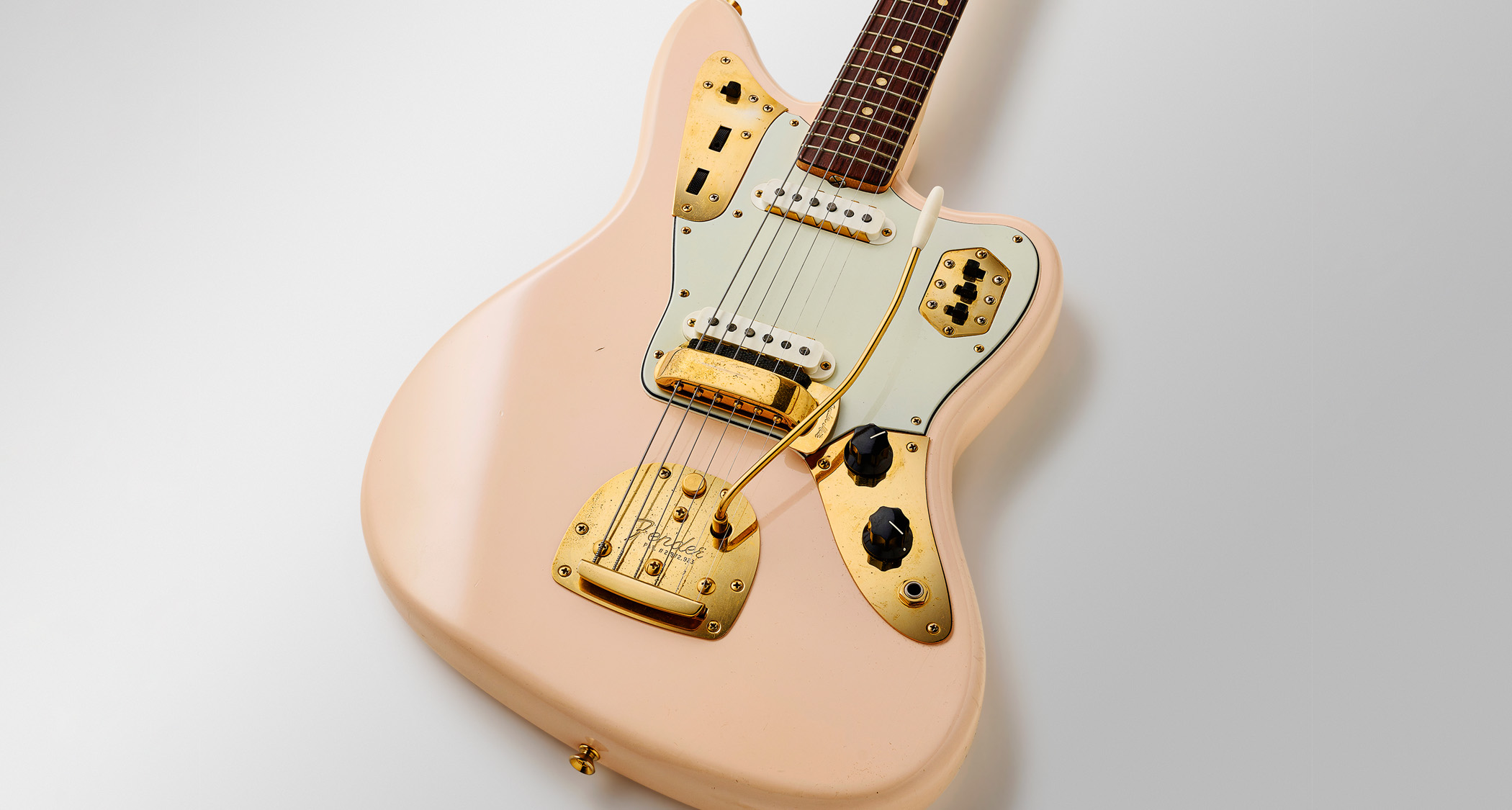
“The story of how this guitar’s provenance was exposed is almost as interesting as the provenance itself,” says Martin Kelly.
On a recent visit to America, Martin was fortunate to meet a gentleman called Glenn Storlie, fresh off a flight from Amarillo where he runs Covenant Recording Studio. Glenn had spent years searching for a rare custom-ordered Fender since its original owner, his aunt Reverend Daisy E Guthrie, sold it in the late 80s – a pink Jaguar with matching headstock and gold hardware.
The guitar isn’t finished in Fender’s ridiculously rare Shell Pink by explaining that the Ford Motor Company had created a colour called ‘Daisy Pink’ especially for his aunt
Martin continues: “My ears pricked up immediately as there’s only one known pre-CBS Jag finished that way and it’s owned by one of my best pals Phil Hylander. Glenn looked shell-shocked that I knew of its whereabouts and confirmed that the guitar isn’t finished in Fender’s ridiculously rare Shell Pink by explaining that the Ford Motor Company had created a colour called ‘Daisy Pink’ especially for his aunt.
“She was famous in her own right and had the paint sent to Fender. It was a special moment having the story behind that unique instrument, a true Fender custom order, confirmed.”
6. 1966 Fender Electric XII Ice Blue Metallic

Fender wasn’t always first to market with innovations and it was, in fact, Rickenbacker who popularised the electric 12-string guitar, making an inspired choice to present a 1963 prototype to Beatles guitarist George Harrison, who used it on tour in 1964. The advent of The Byrds’ jangling Rickenbacker sound on No 1 single Mr Tambourine Man set the seal on the 12-string electric’s popularity and Fender duly launched its take in June ’65 with the Electric XII model.
The new model’s body was clearly based on the Jazzmaster outline, though split pickups and a rotary selector (with which you could select pickups individually, together or together but out of phase) gave it its own distinctive sonic and visual identity, along with the impossible-to-miss ‘Hockey Stick’ headstock.
On launch, the standard finish was sunburst with a pearloid guard, which was soon swapped out for faux tortoisehell. Interestingly, Martin Kelly says that an unusually high proportion of Electric XIIs were made in custom colours as a CBS marketing ploy to popularise the model.
7. 2023 Fender Jaguar FSR Inca Silver
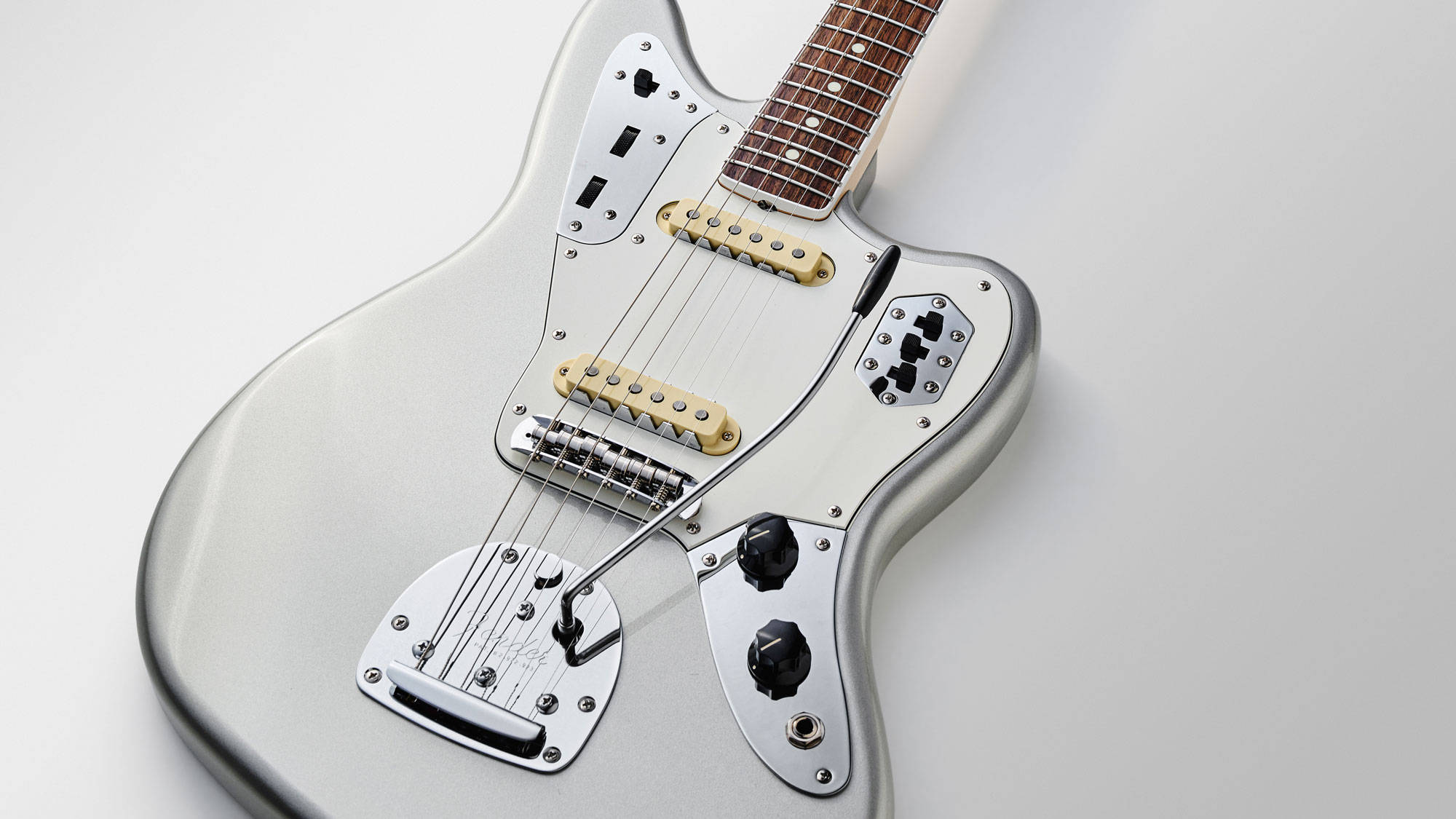
“At the moment, Fender Japan are making a lot of their Jazzmasters and Jaguars with basswood bodies,” explains Keith Anderson, owner of Gas Station Guitars. “But every main production run they do a very limited and exclusive run alongside it with special features, almost to promote that run. These very high-spec ones tend to sell very quickly and then the rest of the run continues. And that was the case with this.
“It was made alongside the latest Jaguar Traditional run, which was just fairly standard Jags with basswood bodies. But this one was a bit special – it had an alder body, a rosewood fingerboard and obviously the matching Inca Silver headstock.
“They also put Fender USA Pure Vintage ’65 Jaguar pickups in it, which is not common for Fender Japan; they normally stick with their own domestic-made pickups, which have a bit of like an iffy reputation sometimes, although they are getting better.
“Another cool feature is that it came as standard with a ‘barrel’ saddle bridge from a Mustang on it, which is a mod that people often do to replace the standard Jaguar bridge saddles.”
8. 2007 Fender Mustang Competition ‘Beck’ Edition, Capri Orange

Some specialist versions of Fender offsets made solely for the domestic market in Japan can provide some ‘lost in translation moments’ for collectors based elsewhere in the world – including this ‘Beck’ edition Mustang, which, at first glance might seem to be a tribute to US indie-pop innovator Beck Hansen, or even some sort of obscure Jeff Beck signature guitar.
In fact, says Keith, the name derives from a popular Japanese animated series somewhat whimsically entitled Beck: Mongolian Chop Squad. “Yeah,” Keith Anderson grins.
“That model was inspired by the name of the Japanese animé cartoon series and there’s a picture of the dog [itself named Beck, which belongs to a main character in] the cartoon on the back of the headstock. They also did a Beck Telecaster as well, which was based on a ’68 reissue Tele. But these guitars were really made only for Japan – because they didn’t think they were likely to sell outside of the domestic market. The stripes are Dakota Red.”
9. 2013 Fender JGS J-Craft Jaguar HH Special

“These are really cool,” Keith says. “I think they may be the only double-humbucker Jags that they made in Fender Japan. They were part of what’s called the J-Craft series – and they’re not building them any more. They were built in the 2000s and a little bit beyond.
“They made a Gunmetal Blue one, like the one you’ve photographed, but they also made them in Gunmetal Red, which was really nice – it was like a burgundy sunburst kind of thing.
“They put what they called ‘Dragster’ humbuckers in them, which sound good, and they had a rosewood fingerboard, plus a matching headstock in the same finish as the body. They made them for a relatively limited amount of time and they don’t turn up very often – really nice guitars, though.”
Jamie Dickson is Editor-in-Chief of Guitarist magazine, Britain's best-selling and longest-running monthly for guitar players. He started his career at the Daily Telegraph in London, where his first assignment was interviewing blue-eyed soul legend Robert Palmer, going on to become a full-time author on music, writing for benchmark references such as 1001 Albums You Must Hear Before You Die and Dorling Kindersley's How To Play Guitar Step By Step. He joined Guitarist in 2011 and since then it has been his privilege to interview everyone from B.B. King to St. Vincent for Guitarist's readers, while sharing insights into scores of historic guitars, from Rory Gallagher's '61 Strat to the first Martin D-28 ever made.
“What blew me away was that everyone wanted the curly maple top. People were calling, saying, ‘I’ve got to have the bird inlays’”: Paul Reed Smith on raising the Standard 24, finally cracking the noise-free guitar and why John Sykes is a tone hero
“It combines unique aesthetics with modern playability and impressive tone, creating a Firebird unlike any I’ve had the pleasure of playing before”: Gibson Firebird Platypus review



![[from left] George Harrison with his Gretsch Country Gentleman, Norman Harris of Norman's Rare Guitars holds a gold-top Les Paul, John Fogerty with his legendary 1969 Rickenbacker](https://cdn.mos.cms.futurecdn.net/TuH3nuhn9etqjdn5sy4ntW.jpg)







